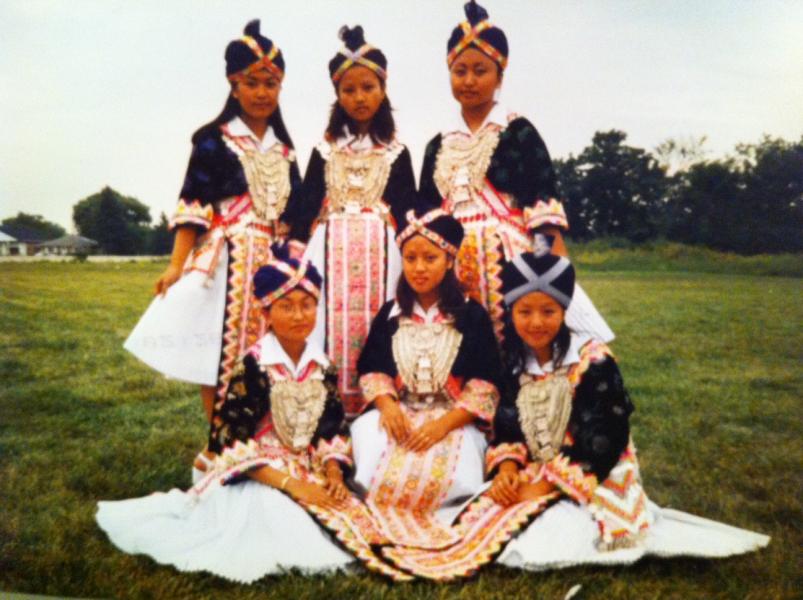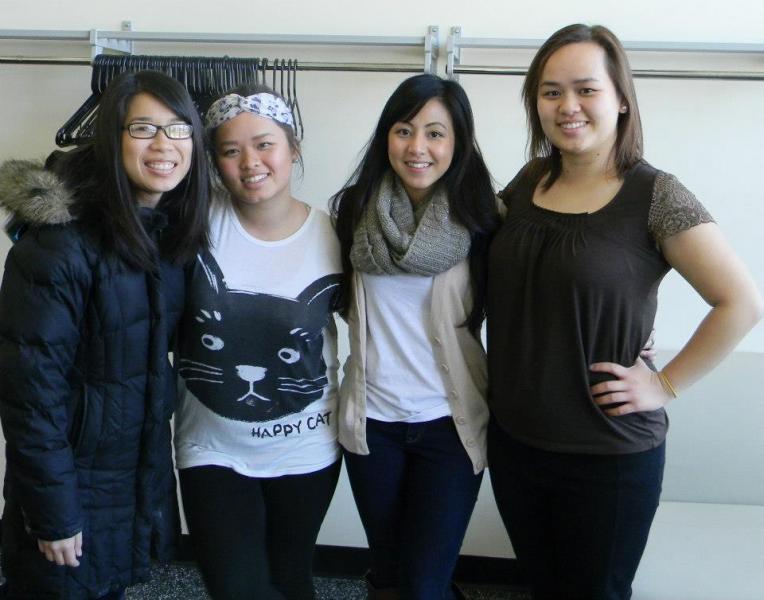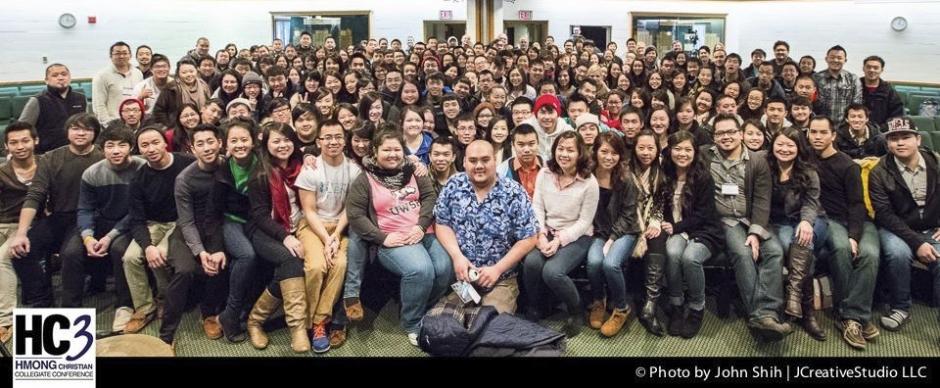
A confession: I have never heard of the word “Hmong” before moving to Wisconsin. But as I have worked with Hmong students and staff the past 7 years, they have deepened my understanding of scripture, of my privilege, and of what it means to be Asian American.
A deeper understanding of scripture
I love studying scripture with others who come from different backgrounds whether it is a different culture, a different church tradition, or even a different socioeconomic upbringing. It opens up scripture in fresh new ways and exposes my implicit assumptions and biases.
Working with Hmong staff and students have opened up different parts of scripture for me.
I came away from studying the passage with awe and wonder at what Jesus did. Studying it with this Hmong student made the passage come alive.
For example, a number of years ago, I was leading an inductive Bible study on the first half of the book of Mark at camp and we came to the passage where Jesus was casting out demons. I asked a Hmong student to share with us about how their culture interacts with demons since Shamanism is a base belief in Hmong culture. To my surprise the student tells me, “it’s so scary I don’t want to talk about it.”
This was surprising to me.
As someone educated in Western thought that focuses on what is measurable and scientific, I seldom think about the supernatural world; therefore the visceral reality found in this passage had never grabbed me before. (We’re too busy tamping down the transcendental, suppressing the supernatural for fear that we might be seen as irrational.)
Often, in our current-day American application to this passage, we talk about the figurative “demons” in our lives. But for this Hmong student, it was literal. He needed to believe that Jesus was powerful enough to cast out demons and he did not have to fear demons. I came away from studying the passage with awe and wonder at what Jesus did. Studying it with this Hmong student made the passage come alive.
A deeper understanding of my privilege

As I learned about Hmong history, I began to realize that as a Chinese American, I embody the two groups that have oppressed the Hmong in recent and past history: the Americans and the Han Chinese.
The Han Chinese tried to assimilate the Hmong for thousands of years but the Hmong were known as fierce, fearless warriors who refused to incorporate Chinese customs and traditions.1 There were many wars and rebellions and the Hmong people kept moving South and moving up further into remote mountains in the fight for their independence. In the early nineteen-hundreds, a mass migration of Hmong families, sick of the persecution in China, moved further south to Vietnam and Laos.
Centuries later, the American story intersects in Laos. In the 60’s-70’s the American government enlisted Hmong soldiers to fight a secret war2 in Laos during the Vietnam war. When the Americans pulled out, the Hmong were persecuted and most fled Laos as refugees.
I realized how sloppy I had been in my use of “Asian American.” Many times I used the term to really mean my own narrative or the East Asian narrative or even more specifically the Chinese H1 Visa Immigrant narrative.
Even though my ancestors were fishermen and poor rice paddy farmers in China, I am still grappling with what kind of privilege I do have from my Han Chinese heritage. And even though I was not born yet at the end of the Vietnam War and did not become a U.S. Citizen until 1992, I know that I have benefitted and continue to benefit as an American Citizen of Chinese heritage.
I’m still in the process of trying to figure how to think about this particular privilege that I hold. I have awkwardly apologized to my Hmong colleagues for what the Han Chinese did to their people. I’m trying to figure out how to advocate for them. In it all, I am so grateful to the Hmong community for opening my eyes.
A deeper understanding of what it means to be Asian American
 Growing up, I made the assumption many people make: I thought everyone was like me. Well okay, not everyone but at least other Asian Americans.
Growing up, I made the assumption many people make: I thought everyone was like me. Well okay, not everyone but at least other Asian Americans.
I thought my narrative was their narrative.
Though my family was not middle class, I grew up in an upper/middle class Chinese American immigrant community. My community fit many of the “model minority” assumptions. To be honest, there were some times where I was proud to be that model minority and sometimes I used it to my advantage.
As I worked with Hmong students, I began to realize how the model minority myth is harmful to my students and colleagues.3 I realized how sloppy I had been in my use of “Asian American.” Many times I used the terminology of “Asian American” to really mean my own narrative or the East Asian narrative or even more specifically the Chinese H1 Visa Immigrant narrative (the Chinese narrative pre-1965 is different). I ascribed socio-economic undertones to the descriptor “Asian American” that I didn’t realize.
I often unconsciously misappropriated the term Asian American. Even the things I attribute to being “Chinese American” is really more tied to immigration narrative than ethnic narrative. I have also aggregated us a group in ways that may be harmful to some subgroups. Working with the Hmong has honed my understanding and definition of Asian American as well as deepened my understanding of my own and my community’s journey in the U.S.
Who Are Asian Americans? from InterVarsity AAM on Vimeo.
Still learning, still growing, still in community
I have learned so much from my Hmong sisters and brothers, but my journey is only just beginning. Here are some questions that I have been wrestling with. I want to invite you to consider them for yourself:
- How does scripture become more vibrant to you as you study it with people from different cultures and backgrounds?
- In what ways do you need to adjust or broaden your definition of “Asian American”
- To what extent have you explored the history of your people? Where have they been oppressed? Where have they been oppressors?
- In what ways is God calling you to reach out to or advocate for our Southeast Asian brothers and sisters?
In my work with Asian American Ministries in InterVarsity, we have seen tremendous growth over the past few years. But we still have a lot of growing to do! Did you know that over half of Asians in America are South or Southeast Asians but under a quarter of InterVarsity AA students are South or Southeast Asians? Did you know that we only have 8 Mainland Southeast Asian field staff in InterVarsity? Most if not all come from refugee communities. We have a large task ahead of us and so many more communities to reach!
The Hmong people have given me a deeper understanding of Asian Americans and that has forever changed how I see the role of Asian American Ministries in InterVarsity. Pray with me that the Lord would enable us to reach more Southeast Asian students. We have so much to learn from them and they have so much to offer us in our understanding of God’s kingdom!

A group shot from the annual Hmong Christian Collegiate Conference (HC3)
Further Application Ideas
Notes
1. ^ Fadiman, Anne. The Spirit Catches You And You Fall Down: A Hmong Child, Her American Doctors, And The Collision Of Two Cultures. New York : Noonday Press, 1998.
2. ^ Only recently in 1997 did the U.S. officially acknowledged the Secret War, twenty two years after it ended.
3. ^ Readings on the mal-effects of the Model Minority Myths: The Myth of the Model Minority and 6 Reasons We Need to Dismantle the Model Minority Myth of Those ‘Hard-Working’ Asians. (These articles generalize the success of East Asian and South Asians but in reality the dividing line is the large numbers of East Asians and South Asians who recently came through the H1 Visa where advanced degrees are required and those who did not.)